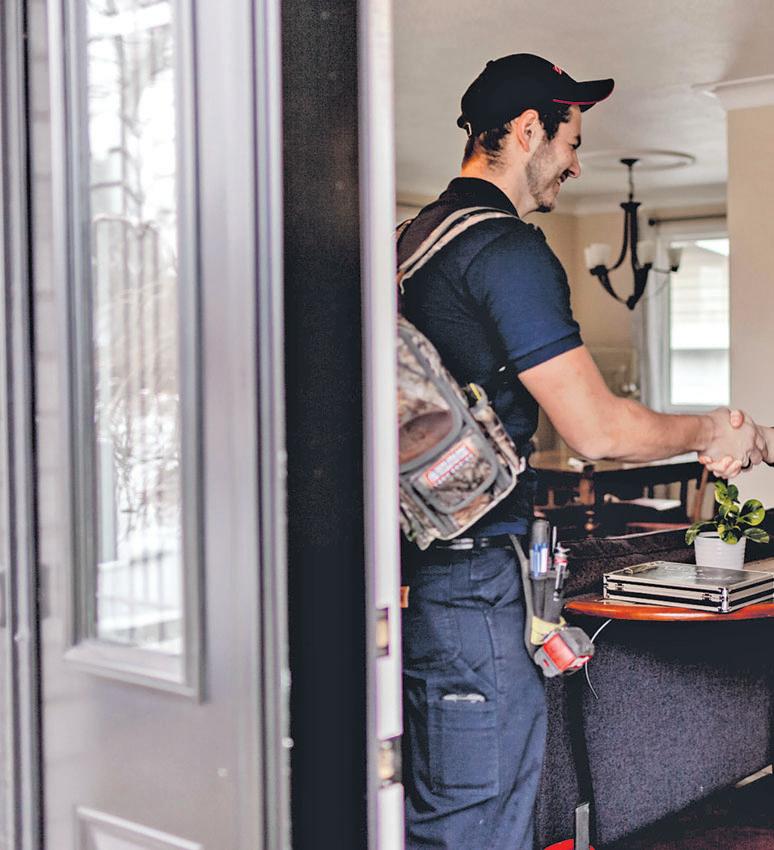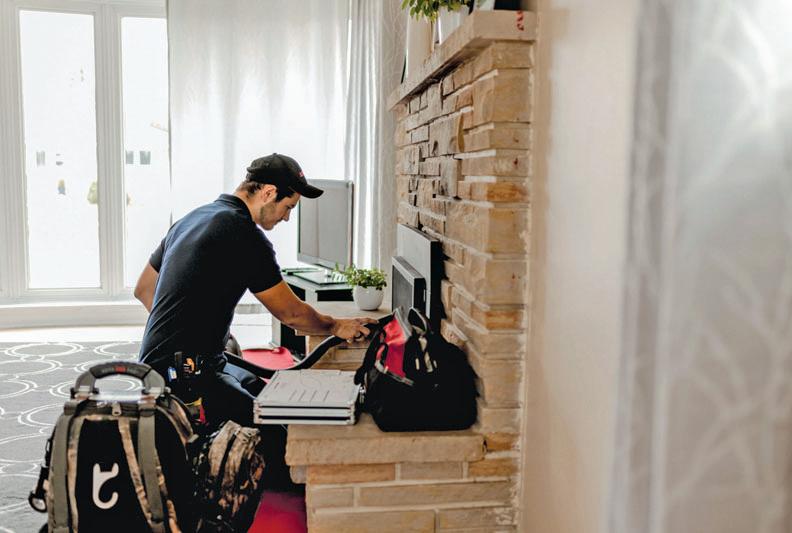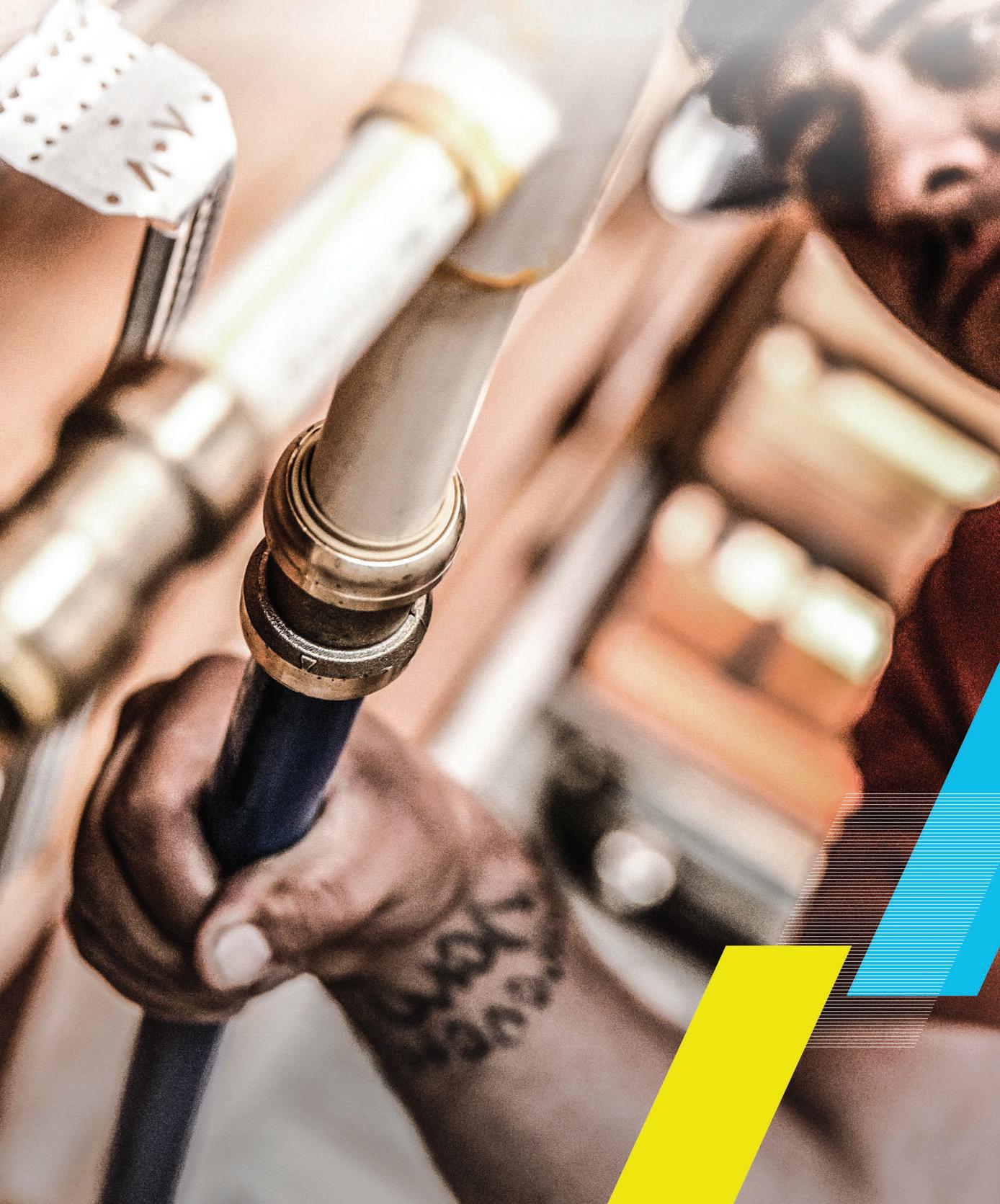
7 minute read
Air Conditioning
Setting a benchmark at your company will increase the number of satisfied customers By Glenn Mellors
Fo r nearly 25 years now flat rate pricing systems have been “inching” their way into our service world. “Inching” being a play on words. For contractors in Ontario, the name Gerald Inch, of Roy Inch and Sons Service Experts, London, Ont., is synonymous with flat rate service pricing. Roy Inch’s pricing system was my first exposure; however, I am sure there must have been other pioneers in the creation of such systems.
In my 40-plus years in the industry, I have found two things that are common when I speak to HVAC business owners: 1) They want to price every job themselves down to the smallest nuts and bolts; and2) They still want to shop around to buy the least expensive nuts and bolts. It is here where we devalue our own worth and that of the company; it is also here where we build a culture with our staff that price means everything.
Now, I am not saying that price is not important; what I mean to say is that great service for a fair price is even more important when it comes to building a profitable company. Your time is too valuable to be pricing service work orders and trying to save 10 cents on an elbow. Efficiency and profitability are further compromised when your field staff are all doing the same thing, pricing and shopping for parts.

Even the simplest things, like the way technicians greet customers, will be different after COVID-19.
One of the big factors in time and material pricing systems is the inconsistency of pricing for the same repair performed by one tech over another. Perhaps neighbours or family members compare a service work order invoice from your company. The worst is over the phone quoting by two people in your office, who give out different prices.
Years of data
So, if you recognize that you’re spending too much time after hours on pricing quotes, invoicing or, heaven forbid, calling to collect your fees, then it is your turn to embrace flat rate pricing (FRP). There are many good systems out there to choose from, so I will leave that fun of shopping up to you, but what I will do is go into the nuances of FRP.
Imagine for a moment that someone has collected years of data on the amount of time spent to diagnose a repair, acquire all the necessary parts to complete the repair, the time to complete the repair, and finally the odds of a callback occurrence. They collect this data on the good, the bad, and the downright ugly on these repairs and create an industry average.
This criterion sets the benchmark for labour hours, eliminating guesswork and nickel and diming your customer. Yes, you will experience all three types of repairs, and yes it will seem like you lost your shirt on one job, but remember business is a game of numbers.
Parts pricing can be done in a couple of ways. You can shop your own pricing, use that of the FRP supplier or have your favourite wholesaler provide you pricing a couple of times a year. There is no need for day-by-day price checking as the system works on the law of averages. This sets the second benchmark. Now that we have our labour hours per job established and our parts cost, you can input your labour rate and your parts mark up. Many FRP suppliers already have industry standards for you to choose or modify as you wish. Now, every six months or so, review your numbers. I have had companies that
will go two years between reviews. They are so comfortable with their flat rate system that they see no need to spend the time to do it more often.
Before I move on any further, let us review some important factors about labour costs. So often when we talk costs, we confuse it
Please see ‘Number’ on page 27
63%
energy saving potential in today’s buildings and industrial processes
is realizing a more energy efficient city infrastructure

Canadian infrastructure investments are on the rise, and with ambitious climate and energy targets in place, Danfoss has been helping make Canadian cities more efficient and sustainable for 65 years. Heating and cooling consume as much as 40 percent of a building’s total energy use. Danfoss solutions like AC drives, variable speed compressors and hydronic control valves help cut energy consumption and improve comfort and control. City-wide, Danfoss’ innovative district heating solutions amplify efficiencies — cost-effectively boosting energy productivity, minimizing environmental impacts and helping cities plan for a sustainable future. With Danfoss, our cities can get more out of less without sacrificing performance or reliability.

Discover how we’re Engineering Tomorrow at danfoss.ca
Having a flat rate for straightforward jobs like a gas fireplace service saves considerable time over estimating on a job by job basis.
Number of customer complaints should decrease

Continued from page 25
with what we pay per hour… wrong! I have seen companies go out of business by not understanding costs per hour. Some old school people have passed along some “tips” that do not work anymore. My Dad would take what he paid the person and double it to achieve his charge-out rate. Yikes!
Let’s do the math
Here is the formula I was taught a few years ago by some industry professionals with strong accounting skills. We start with what we pay per hour (let’s say $20 per hour), and then we have minimum government benefits (to keep it simple we will use 20 per cent). So now, we are paying out $24 per hour, but wait, we have to pay for eight to 10 stat holidays, two plus weeks of personal vacation days, sick days, days away for training, storm days and, last but not least, “no work today” days.
The industry average is about 65 days per year that the service tech does not produce any revenue, but we paid them for 25 per cent of the working calendar (do your own calculation if you like). This calculation is referred to as the employee efficiency rating (EER).
Most companies run between 65 per cent and 75 per cent EER. If we use 75 per cent, then we divide our $24/hr. rate by 75 per cent, which equals $32/hr.
To obtain the gross margin to cover trucks, office, and administration, you should not exceed 25 per cent in labour, therefore your charge out rate in this example would be $32/ hr. divided by 25 per cent, which equals $128/ hr.
Do your own calculation as this is just an example. I have companies that run from $128 to $290 per hour charge-out rate. Only you know what your number is! You now have your proper labour rate. With your parts pricing and your selected FRP system, you can now consistently quote virtually any repair on-site every time.
New normal following COVID
Our world has been changed for us and I think we would be foolish to imagine the old ways coming back.
Touchless purchasing and immediate payment are our “new” normal. By adopting FRP, you will be able to accurately quote a repair onsite, perform the repair and create an invoice on site, and finally collect the fees associated with the repair. This will increase productivity, profitability and reduce the latenight work time!
One final note, once you adopt a flat rate, the number of customer complaints about pricing goes way down almost to a point of non-existence. But of course, you’ll still find that one person you will never make happy! ✚
Glenn Mellors was born into a plumbing family and started in the industry in 1973. He entered the HVAC side of the business in the 80s, working in wholesale, and then joined Lennox in 1992. In 2008 he joined the ClimateCare Cooperative Corporation, an Ontario contractor group, where he is director of training and implementation. Glenn can be reached at
gmellors@climatecare.com.











